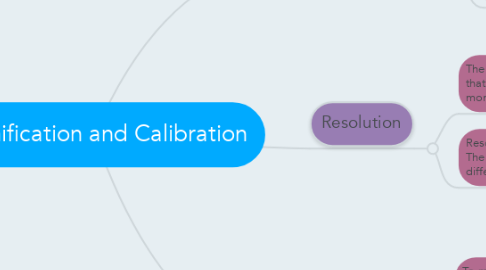Magnification and Calibration
by Brooke Murphy


1. Magnification
1.1. Magnification is how many times larger the image is to the actual specimen.
1.2. A compound microscope allows magnification to be adjusted through interchangeable objective lenses.
1.3. Calculation
1.3.1. Magnification = Size of Image / Actual Size of Object
1.3.2. Can be rearranged in a standard form triangle
2. Resolution
2.1. The resolution determines the amount of detail that can be seen - the higher the resolution the more detail can be seen.
2.1.1. Resolution is the ability to see individual objects as separate entities.
2.2. Resolution is limited by the wavelength of light. The best resolution is achieved when the different objects are half a wavelength apart.
2.2.1. Resolution can be increased by using beams of electrons which have a shorter wavelength, meaning that the different objects can be closer together and still be seen.
3. Graticules
3.1. To measure the size of a sample under a microscope you use an eyepiece graticule.
3.1.1. As magnification can vary, the microscope ha to be calbrated using a graticule and a micrometer.
3.1.2. An eyepiece graticule is a glass disc marked with a fine scale from 1-100. The scale of the divisions changes with magnification so you use a stage micrometer to calibrate the scale.

